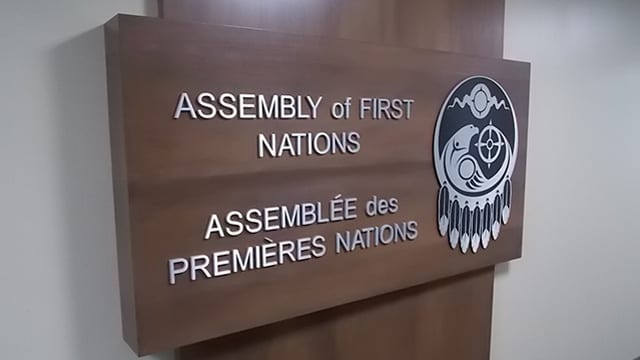
Indigenous children face the highest rates of poverty in the country with almost one in every two First Nations children living in households with low incomes says a new study written by the Assembly of First Nations, and the Canadian Centre for Policy Alternatives.
“Canada is not tracking First Nations poverty on-reserve so we did,” said AFN National Chief Perry Bellegarde in a statement.
“The findings of this report are shameful and underscore the urgent need to invest in First Nations children, families and communities.”
The study, published by the Upstream Institute, finds that 47 per cent of First Nations children on and off reserve live in poverty.
That figure rises to 53 per cent when looking at First Nations children living on reserves, the highest rate of child poverty anywhere in Canada.
The on-reserve child-poverty rate is roughly three times the national rate of 17.6 per cent reported in the 2016 census.
“Our children face the worst social and economic conditions in the country. They deserve an opportunity to succeed,” said Bellegarde.
“Canada has not been tracking poverty on-reserve and that’s one reason the situation is not improving.”
Taking a deeper dive into a decade of census data, the researchers found that poverty rates barely budged downward for most Indigenous communities between census counts in 2006 and 2016.
At the same time, the number of children on reserves stayed stagnant over that time at about 120,000, so it’s not a matter of growing populations outstripping social programs and economic growth.
The researchers say that “points to a failure to undertake effective solutions.”
There were, however, some exceptions.
On-reserve child poverty rates in Quebec were lower in 2016 than they were in any other province, largely as a result of agreements with First Nations governments to share revenues from natural resources.
Metis child-poverty rates dropped to 22 per cent from 27 per cent, but did so at the same time that the number of people identifying as Metis rocketed upward.
The researchers suggest that the decline in poverty rates might be because of more better-off people describing themselves as Metis on census forms.
Inuit child-poverty rates declined to 25 per cent from 27 per cent between 2006 and 2016, but about half the Inuit population is excluded from poverty figures because they live in the territories and Statistics Canada does not believe its low-income measures work there.
Official poverty statistics don’t examine the situations on reserve except during census counts, which the researchers say must change to better track anti-poverty efforts.
Not tracking these figures, the study says, may muddle the statistics nationwide.
“We need a combination of political will, action, cooperation among governments and sustainable investments in water, infrastructure, housing and education to help First Nations children succeed and get a fair start in life,” said Bellegarde.
“It’s beneficial to all Canadians to close the gap in quality of life between First Nations and Canada.”
Earlier this year, the national statistics office reported that in 2017, the most recent year available, about 622,000 children in all lived below the newly adopted official poverty line, a decline of 278,000 since 2015.
“It is time to officially acknowledge that poverty exists on reserves and in the territories,” the study says. “The causes of poverty among Indigenous Peoples are varied. Solutions must address this complexity.
“A necessary first step requires a clear set of goals with transparent criteria.”
-with files from the Canadian Press











straight talk
If the INAC offices did not track this then how come they work there. This is stupid, they know we are in third world conditions. They know this just by how much limited social money goes to each person. INAC you are goofs quit your jobs you are not doing anything. The programs are a scam for others to make money off the backs of poor people eh. Biggest Industry in Canada eh. Governments are sick eh. This is not only on reserve it is off reserve also eh
….and the other half?